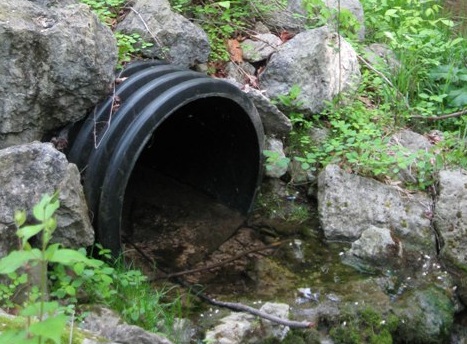The US Environmental Protection Agency (EPA) continues to expand and refine environmental compliance requirements, including those related to greenhouse gas (GHG) emissions. In particular, facilities and organizations subject to EPA's mandatory GHG emission reporting rules should be preparing to submit reports covering calendar year 2012. Even an entity that reported 2010 or 2011 emissions will still have to adjust its data collection and information reporting efforts. Although reports typically are due March 31, that’s a Sunday this year so April 1 is the date.
Audit, Compliance and Risk Blog
Tags: Environmental risks, Environmental, EHS, EPA, ghg, fracking, climate change
Hazardous Material Regulations: Don't Forget Your 2012 Hazmat Inventory
Posted by Jon Elliott on Fri, Jan 18, 2013
If your facility handles sufficient quantities of hazardous materials (“hazmat”), then federal laws and regulations—specifically the federal Emergency Planning and Community Right-to-Know Act of 1986 (EPCRA)—requires you to compile and submit an annual inventory of qualifying hazmats to state and local agencies. Although EPCRA allows for abbreviated reporting (“Tier 1”) and full reporting (“Tier 2”), all states presently require Tier 2 reporting. Most agencies require facilities to use EPA’s “Tier 2” reporting forms and/or “Tier2/Submit” software, but some states have promulgated their own variants. Inventory reports are due on March 1 for the preceding calendar year, so January is a great time to confirm that your facility has collected and stored the appropriate data.
Tags: Health & Safety, Environmental risks, Environmental, EHS, EPA, Hazcom
Opportunities For Learning: Free STC Webinar Open To All
Posted by Melanie Powers on Fri, Jan 11, 2013
Essentials of Stationary Reciprocating Internal Combustion Engines (RICE) MACT Compliance
Date: Thursday, January 24, 2013
Time: 2:00 PM - 3:00 PM EDT
Free! All are welcome
Tags: Environmental risks, Environmental, EHS, EPA, mact, Webinar, NSPS
Understanding Insurance Law: 3 Important Cases in 2012 - Part 1
Posted by Barry Zalma on Mon, Jan 07, 2013
As part of the year in review series, insurance expert Barry Zalma identifies his three most significant insurance law cases of 2012. Here is his first choice:
Tags: Business & Legal, California Legislation, Environmental, Insurance, Insurance Claims
2012 has been a relatively quiet one for environmental health and safety (EH&S) compliance personnel. Fewer new laws are enacted in election years, because some or all of the lawmakers are busy running for election or re-election.
Tags: Health & Safety, OSHA, Environmental risks, Environmental, EHS, EPA, Greenhouse Gas, ghg, Hazcom
Response to Criminal Violations in the Deepwater Horizon Disaster
On November 28, the Environmental Protection Agency (EPA) announced that it was temporarily suspending BP from all new contracts with the U.S. government. EPA acted two weeks after BP agreed to plead guilty to 14 criminal counts, including manslaughter, obstruction of Congress and other criminal charges stemming from the 2012 Deepwater Horizon blowout and oil spill. BP also agreed to pay $4.5 billion in penalties. Federal agencies have authority to issue temporary suspensions and longer-term “debarments” to parties that violate criminal laws (over three thousand were issued in the last fiscal year). EPA is the lead agency doing so for violations of national water and air laws. The effects on BP could be significant: BP is currently the largest lease-holder in deep water portions of the Gulf of Mexico, and in 2011 was the largest supplier of fuels to the U.S. military. Its existing contracts are not affected, but it is ineligible for new ones (for example, the company has already had to skip a round of deep water leasing by the Department of the Interior).
Tags: International, Health & Safety, Environmental risks, Environmental, EPA, Hazcom
While we watch negotiators in Doha, Qatar continue to struggle to find international agreement on effective climate change minimization measures, it's useful to look at one part of the planet where aggressive actions are underway. No, not the U.S. federal government, which took time out of preparations for “fiscal cliff” negotiations to pass a law on November 27 empowering the Department of Transportation to prohibit U.S. airlines from participation in the European Union’s Emissions Trading Scheme (Public Law No. 112-200). This month's prime example of action is California, which just held its first auction of greenhouse gas (GHG) emission allowances to inaugurate a statewide cap-and-trade program.
Tags: California Legislation, Environmental risks, Environmental, Greenhouse Gas, ghg, climate change
The presence of “hazardous” materials in your workplace can trigger a wide variety of environmental health and safety requirements and hazardous waste regulations. The Occupational Safety and Health Administration (OSHA) and state worker protection agencies issue standards to protect workers during occupational handling and storage. The US Environmental Protection Agency (EPA) and state environmental agencies issue requirements governing the management of hazardous wastes, and emissions to a variety of environmental media (air, water and land).
Tags: Employer Best Practices, Health & Safety, OSHA, Employee Rights, Environmental risks, Environmental, EPA, Hazcom
Got Paint? Complying With Hazardous Waste Regulations & Requirements
Posted by Jon Elliott on Fri, Nov 02, 2012
Do you know what happened to any paints, coatings and surface preparation materials left over after the last project at your facility?
Tags: Business & Legal, Audit Standards, Health & Safety, California Legislation, Environmental risks, Environmental, Hazcom
GHG Auditing and Environmental Compliance — Are You Prepared?
Posted by Jon Elliott on Tue, Oct 16, 2012
Environmental compliance has been an important issue for large, multi-national companies for many years, and in recent years it has taken on added importance for their suppliers. Case in point: Walmart, Procter & Gamble, IBM – many Fortune 500 companies – are requiring that their vendors audit and quantify the greenhouse gas (GHG) emissions in their supply chains. Indeed, many of these high-profile organizations have undertaken ambitious plans for reducing their carbon footprint. (A big driver of this activity is stronger environmental regulation and pressure from environmental organizations, customers, investors and the like.) For example, in early 2010 Walmart announced a goal to eliminate 20 million metric tons of GHG emissions from its global supply chain by the end of 2015. Procter & Gamble has the stated objective of generating 100% of its energy from renewable resources – with a target of generating 25% of that by 2020.
Tags: Corporate Governance, Audit Standards, Health & Safety, Environmental risks, Environmental










